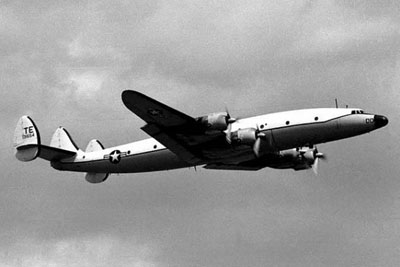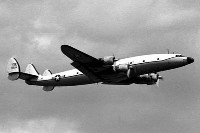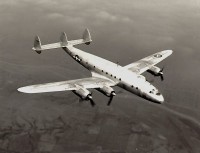|
Global Aircraft -- C-121 Constellation
Aviation Center
US Attack
US Bombers
US Cargo
US Fighters
US Helicopters
US Patrol/Pursuit
US Reconnaissance
US Tankers
US Trainers
US UAV's
US X Planes
Orbiter Vehicles
WWI Aircraft
WWII Aircraft
Airbus
Antonov
Boeing
Dassault
Ilyushin
Kamov
MiG
Mil
Saab
Sukhoi
Tupolev
Yakovlev
Joint/Rest of World
Entertainment Center
Members Center
New Technologies
Contact Us
Extra Navigation
GAC Engine
C-121 Constellation Specifications
C-121 Constellation Background
The Constellation's unique 123-foot wing span, four radial engines, triple-tail design and graceful dolphin shaped fuselage make it an unforgettable aircraft. Lockheed designed the Constellation in the early 1940s. The design was in response to a specification supplied by Howard Hughes for a commercial airliner for TransWorld Airlines. In its day, the Constellation reigned as Queen of the Skies. It was the first aircraft to fly coast-to-coast non-stop and was pressurized. The "Connie" set new records for size and speed. In April 1944, a C-69 Constellation made world headlines when Howard Hughes and Jack Frye of TWA shattered the transcontinental commercial record, piloting the largest land transport plane ever built from Los Angeles to Washington, D.C., in 7 hours 3 minutes. Military use of the "Connie" spanned three wars: World War II, Korea and Vietnam. At total of 856 "Connies" were built 1943 and 1958. They were used extensively by both military and civilian airlines until the early 1960s. In addition, in 1967, an RC-121 was the first aircraft to provide Airborne Warning and Control intercept information to a an Air Force fighter intercepting and shooting down a MiG over Vietnam. | ||||||||||||||||||||||||||||||||||||||



